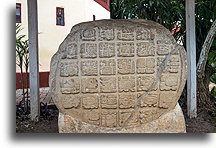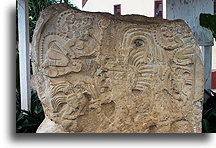Nojpetén, capital of the Mayan kingdom of Peten Itza, was densely built up with temples, palaces and thatched houses. According to Spanish records from 1698, there could be over 20 temples in the city located on an island on Guatemalan Lake Petén Itzá. The structures appeared to be very similar to the main pyramids of Chichen Itza and Mayapan. This was probably because after the fall of those Yucatan cities, the people of Itza moved here and built the city of Nojpetén as their capital. The city was captured in 1697 as the last one to fall into the hands of the Spanish conquistadors. This date marks the end of the Maya civilization.


When the Maya city fell, the Spaniards destroyed it completely. It probably took a lot of effort, and the stone was used to build new houses. On the ruins, the Spaniards built a new colonial city, with the church at the highest, central point of the island. The new colonial city is known today as Flores. In the square next to the church, we have noticed original fragments of several ancient Maya stelae. These are the only remains of the old Nojpetén.




